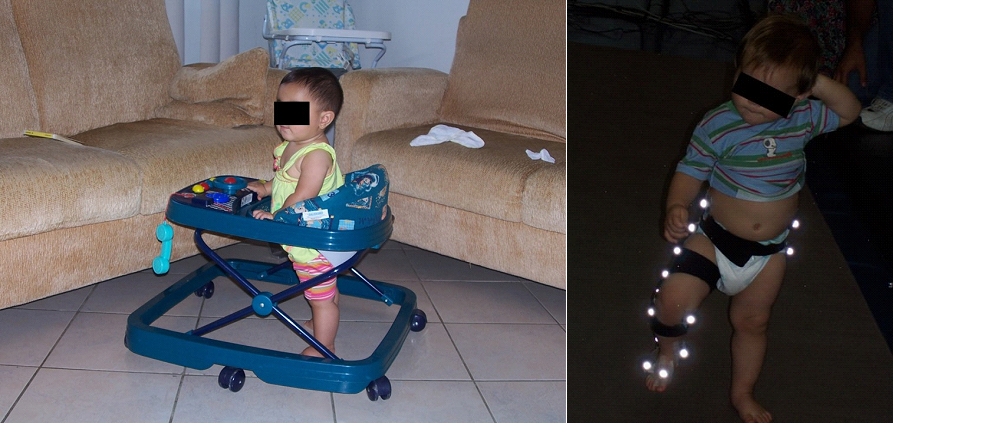By Paula Chagas
Health professionals argue that the use of baby walkers before gait acquisition will delay the child’s motor development. However, the actual effects of baby walkers on the biomechanics of infants’ emergent gait pattern have not been empirically established. In this study, we compared the development of gait kinematics in toddlers who had and who had not used a baby walker prior to gait acquisition.
We assessed temporo-spatial gait parameters and lower limb kinematics in 32 toddlers, 16 in the baby walker group and 16 in the non-user group, on the week of gait acquisition and then monthly for up to six months. Age of gait acquisition did not differ between groups. The baby walker group walked slower and had longer stance and swing phases. This group also showed smaller knee flexion and greater hip range of motion during the gait cycle in the sagittal plane.
The results demonstrated that there was no delay in the age of gait acquisition in toddlers who had used a baby walker compared with those who had not. However there were specific joint amplitude differences between toddlers who had used a baby walker and those who had not, which tended to disappear in the months following gait acquisition. These findings contribute to evidence-based recommendations by health care professionals about the use of baby walkers by toddlers during emergence and early development of gait. The decision to use or not the baby walker might be left to caregivers’ beliefs and opinions providing awareness of accidents – especially burns and traumatic head injuries. In conclusion, regarding their gait development, the use of baby walkers by typically developing infants prior to gait acquisition can be considered neither hero nor villain.

Figure. left: toddler in a baby walker; right: toddler during gait data collection.
Publication
Chagas PSC, Fonseca ST, Santos TRT, Souza TR, Megale L, Silva PL and Mancini MC. Effets of baby walker use on the development of gait by typically developing toddlers. Gait Posture, 2020, 76: 231-237.
About the Author
Paula Silva de Carvalho Chagas
Universidade Federal de Juiz de Fora

PhD, PT, Professor and Researcher, Graduate Program in Rehabilitation Sciences and Physical Functional Performance, School of Physical Therapy, Juiz de Fora, Minas Gerais, Brazil. Research interests: functioning of children with disabilities, gait analysis, quality of life and related factors.
Copyright
© 2020 by the author. Except as otherwise noted, the ISPGR blog, including its text and figures, is licensed under a Creative Commons Attribution-ShareAlike 4.0 International License. To view a copy of this license, visit https://creativecommons.org/licenses/by-sa/4.0/legalcode.
ISPGR blog (ISSN 2561-4703)
Are you interested in writing a blog post for the ISPGR website? If so, please email the ISGPR Secretariat with the following information:
- First and Last Name
- Institution/Affiliation
- Paper you will be referencing


